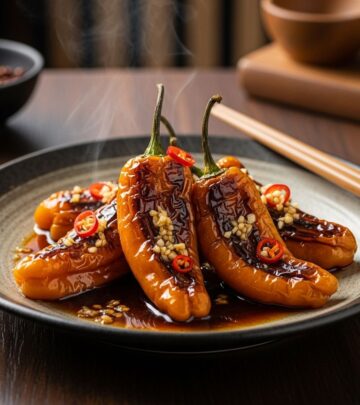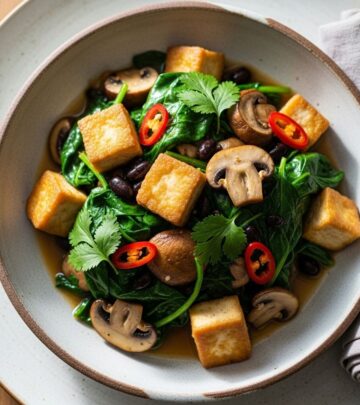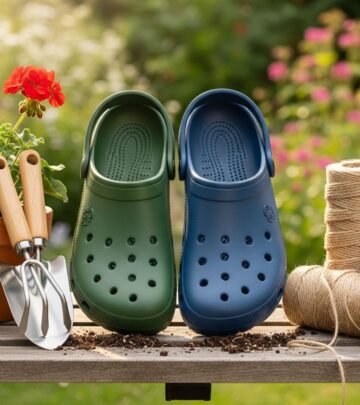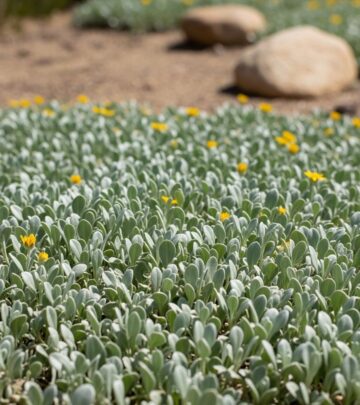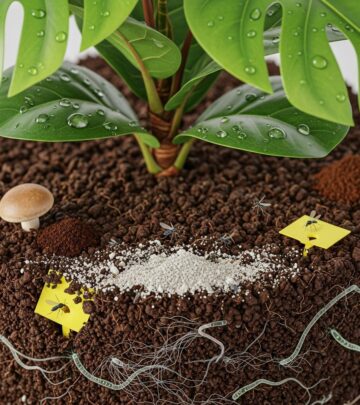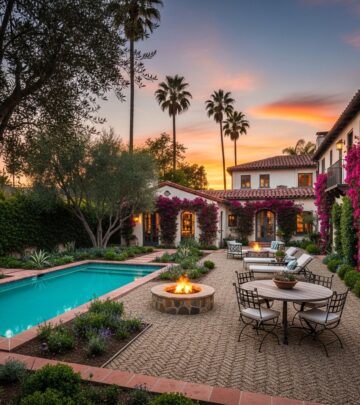Bird Friendly Garden: 15 Best Plants For Year-Round Appeal
Transform your outdoor space into a bird-friendly haven by selecting native plants, providing water and shelter, and designing for year-round appeal.
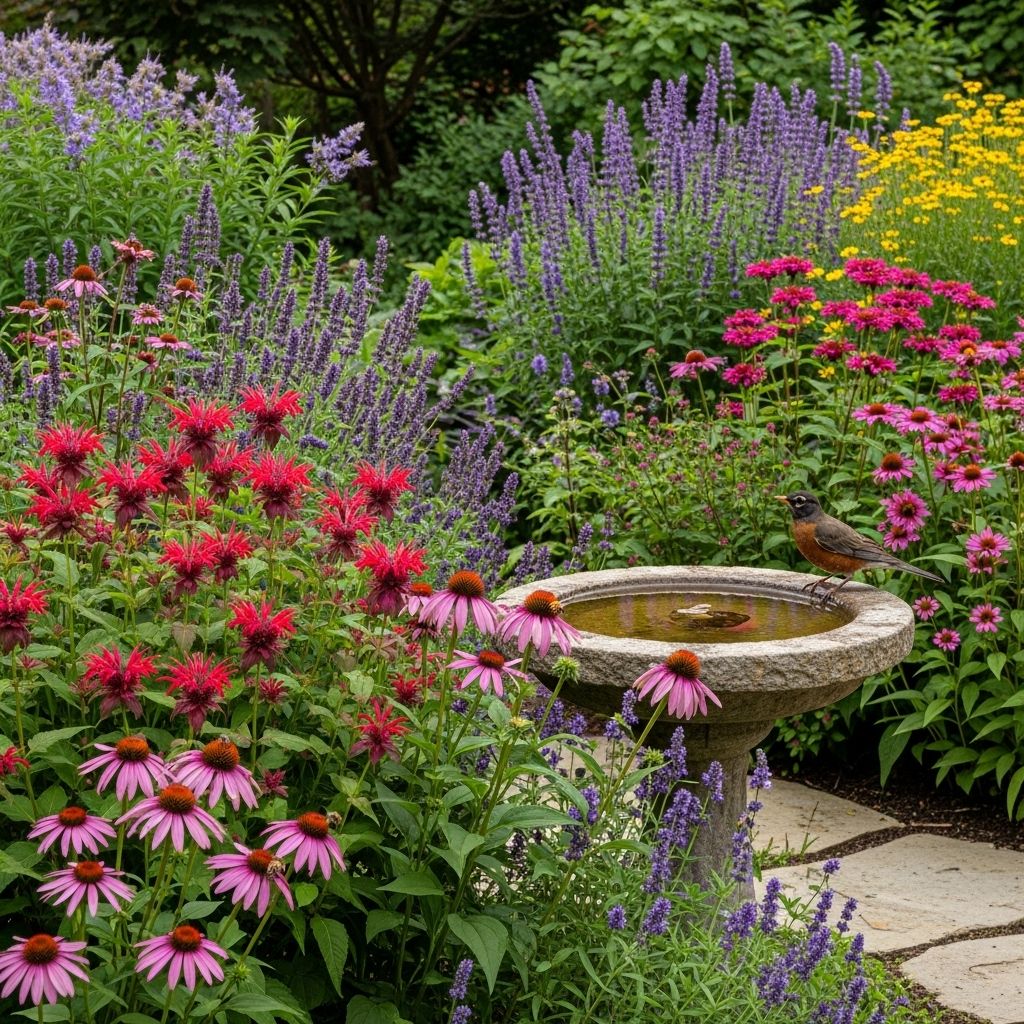
Image: HearthJunction Design Team
How to Create a Bird-Friendly Garden
Biodiversity and beauty can flourish together in your yard. By turning your garden into a welcoming oasis for birds, not only do you enjoy vibrant color, cheerful songs, and lively movement, but you also provide a safe refuge and vital resources for your feathered visitors. Creating a bird-friendly garden is about more than scattering a few seeds—it involves thoughtful plant selection, habitat design, and attention to birds’ basic needs.
Why Attract Birds to Your Garden?
Birds do much more than delight us with their presence. They are essential allies in the garden ecosystem, offering these vital benefits:
- Natural Pest Control: Many garden birds feed on aphids, caterpillars, grubs, and other insects, helping maintain plant health and reducing the need for chemicals.
- Seed Dispersal: Birds spread seeds as they forage, helping to propagate new plants and maintain plant diversity.
- Pollination: Certain bird species, especially hummingbirds, are important pollinators for flowers.
- Educational Value: Gardens alive with birds become classrooms for curious minds, offering opportunities to observe, learn, and connect with nature.
Designing a Bird-Friendly Garden: The Foundation
Creating a space that birds will flock to requires meeting their basic needs for food, water, shelter, and nesting. Here are the core principles of bird-friendly landscaping:
- Choose Native Plants: Select trees, shrubs, and flowers indigenous to your region. Native plants supply food (berries, seeds, nectar) and shelter perfectly suited to local bird species.
Examples: Serviceberry, coneflower, elderberry, maples, and oaks. - Diversity Is Key: A wide variety of plants supports a wider range of birds. Aim for a mix of evergreens, deciduous trees, shrubs, perennial flowers, and groundcovers.
- Plant in Layers: Mimic natural woodland structure by including canopy trees, midlayer shrubs, understory plants, and low groundcovers. Different species prefer different levels for foraging and nesting.
- Provide Water Year-Round: Birds need a reliable source of water for drinking and bathing. Install birdbaths or small ponds, and in colder regions, consider a heated birdbath for winter access.
- Offer Shelter and Nesting Sites: Dense shrubs, trees, brush piles, and purpose-built birdhouses protect birds from predators and weather, while supplying safe nesting locations.
- Avoid Pesticides: Chemicals can harm birds directly or by reducing their food supply. Embrace organic gardening for a safer, healthier environment.
Best Plants for a Bird-Friendly Garden
The secret to attracting birds is to create an irresistible menu of berries, seeds, and nectar across the seasons. Here are 15 bird-attracting plants to consider, with an explanation of their benefits:
| Common Name | Type | Attracts | Benefits |
|---|---|---|---|
| Serviceberry (Amelanchier) | Shrub/Tree | Thrushes, waxwings | Spring flowers, summer berries |
| Coneflower (Echinacea) | Perennial | Finches, sparrows | Seeds for songbirds |
| Sunflower (Helianthus) | Annual | Goldfinches, jays | Abundant seeds |
| Dogwood (Cornus) | Shrub/Tree | Bluebirds, robins | Bright berries in fall |
| Elderberry (Sambucus) | Shrub | Mockingbirds | Large berry clusters |
| Bee Balm (Monarda) | Perennial | Hummingbirds | Nectar-rich blooms |
| Maple (Acer) | Tree | Various | Seeds and nesting shelter |
| Black-eyed Susan (Rudbeckia) | Perennial | Chickadees, finches | Seed heads |
| Oak (Quercus) | Tree | Woodpeckers, jays | Acorns, insect habitat |
| Viburnum | Shrub | Cardinals, bluebirds | Fruit clusters |
| Spicebush (Lindera) | Shrub | Thrushes | Berries, shelter |
| Holly (Ilex) | Shrub/Tree | Robins | Winter berries |
| Redbud (Cercis) | Tree | Finches, grosbeaks | Seeds, early flowers |
| Crabapple (Malus) | Tree | Cedar waxwings | Fruit persists into winter |
| Sumac (Rhus) | Shrub | Robins, chickadees | Colorful fall fruit |
Design Tips to Make Your Garden a Bird Magnet
With your plant list in hand, maximize your garden’s appeal and value for birds using these design strategies:
- Layer Your Plantings: Combine tall trees, mid-sized shrubs, and low-growing flowers and groundcovers in naturalistic drifts or clusters to appeal to a range of bird species.
- Leave Some “Wild” Areas: Birds love gardens with a little disorder—allow a corner of your yard to remain untidy with brush piles, leaf litter, or unmown grass for shelter and foraging.
- Seasonal Interest: Choose plants that offer resources throughout the year, such as berry-bearing shrubs in late fall and trees with seeds or cones that persist into winter.
- Color and Flower Choice: Bright blossoms (red, orange, pink) attract hummingbirds, while seed-producing blooms (yellow, purple) lure songbirds and finches.
- Integrate Water Features: A simple birdbath, a shallow stone dish, or a small pond provides essential hydration and bathing spots for birds.
- Use Organic Mulch: Natural mulches like wood chips, leaves, or pine needles foster beneficial insects and worms—another food source for birds.
- Minimize Lawn: Reduce expanses of turf in favor of layered plantings and native meadows, which offer far more foraging and nesting opportunities.
Shelter, Nesting, and Safe Havens
Beyond food and water, birds need safe spaces for roosting and raising young. Offer these habitat essentials:
- Hedgerows and Shrubs: Plant dense thickets and mixed hedges of native species to provide cover from predators and shelter from harsh weather.
- Trees, Old & Young: Preserve mature trees for nesting cavities and perches; plant young trees to ensure future habitat.
- Brush & Log Piles: Stack branches, twigs, and logs in a discreet corner to create a natural refuge and foraging ground.
- Birdhouses: Install nest boxes sized for the birds you wish to attract (e.g., wrens, bluebirds, swallows). Place them in safe, sheltered locations away from heavy traffic and predators.
- Nesting Materials: Leave out natural fibers such as twigs, dried grasses, pine needles, and feathers. Avoid synthetic materials that may entangle or harm birds.
Water: The Shortage Birds Can’t Live Without
Providing clean, fresh water is one of the easiest ways to attract a broad range of birds. Here’s how to make water a garden highlight:
- Birdbaths: Place shallow baths (1-2 inches deep) in open areas, ideally near shelter. Change the water every few days and keep it clean to prevent disease.
- Winter Solutions: Use a birdbath heater or heated bowl in cold climates to keep water available year-round.
- Ponds and Bubblers: Moving water (via pumps, waterfalls, or fountain bubblers) is irresistible to many species and helps prevent mosquito breeding.
- DIY Options: Try making a textured concrete bird bath using large leaves as a mold for a natural look and shallow slope that birds prefer.
Feeding Birds: Plants and Beyond
While native plants should form the foundation of your bird buffet, you can supplement with feeders for greater diversity and more regular visitors:
- Feeder Types: Tube feeders (for finches and chickadees), platform feeders (for jays and doves), and nectar feeders (for hummingbirds and orioles).
- Food Variety: Sunflower seeds, nyjer (thistle) seeds, suet cakes, cracked corn, and fruit slices each draw different birds.
- Feeder Placement: Situate feeders near shelter but with open views for safety. Clean and refill regularly to prevent disease.
- Homemade Treats: Make your own suet or seed balls, and offer fruit in the colder months when natural food is scarce.
Garden Maintenance for Bird Well-Being
- Skip the Chemicals: Avoid pesticides and herbicides; birds are sensitive to toxins, and their insect food supply can be decimated by sprays.
- Prune Sparingly: Schedule pruning for late winter or early spring, after most berries are eaten but before nesting begins.
- Leave Seedheads: Allow flowers like coneflowers and sunflowers to go to seed; birds will feed on them into fall and winter.
- Let Leaves Lie: Decomposing leaf litter harbors bugs and worms—favorite food for ground-feeding birds.
Bird-Friendly Garden Ideas for Year-Round Appeal
- Spring & Summer: Flowering dogwoods, redbuds, and serviceberries blossom and fruit, drawing migrants and nesting birds.
- Late Summer & Fall: Berry shrubs (elderberry, viburnum, chokeberry) provide vital fuel for pre-migration and overwintering birds.
- Winter: Oaks and holly trees offer acorns and berries, while seedheads from perennials like black-eyed Susans sustain flocks into the cold months.
Benefits to You and the Ecosystem
- Increased Biodiversity: A bird-friendly garden supports not just birds but also pollinators, beneficial insects, and other wildlife.
- Natural Balance: Fewer pest outbreaks as birds and predatory insects keep populations in check.
- Conservation at Home: While an individual garden may not save endangered species alone, it provides crucial refuges and supports healthy populations of common birds, contributing to biodiversity conservation.
Frequently Asked Questions (FAQs)
Q: What are the most important features of a bird garden?
A: The essentials are native plants for food and shelter, water sources that are kept clean year-round, a variety of plant layers, and safe nesting sites sheltered from predators.
Q: Which plants attract the most birds?
A: Serviceberry, sunflowers, coneflower, elderberry, and dogwoods are top choices. Diversity is key; mix trees, shrubs, and flowers to appeal to more species.
Q: How can I keep birds safe from cats and other predators?
A: Place feeders and birdbaths at least 10 feet from dense shrubbery where cats might hide. Provide dense, thorny shrubs for quick cover and avoid using netting that can entangle birds.
Q: Is it okay to feed birds year-round?
A: Yes, especially in winter when natural food sources dwindle. Ensure feeders are kept clean and provide a mix of seeds, suet, and fruit.
Q: Are there risks with using pesticides in a bird garden?
A: Yes. Pesticides can poison birds directly or indirectly by killing their insect food. Opt for organic methods or integrated pest management instead.
Getting Started: Actionable Steps
- Make a plant list using native species that supply food and shelter throughout the seasons.
- Layer your garden beds and create diversity in plant heights and types.
- Install water sources, such as birdbaths or a shallow pond, and keep them clean.
- Leave wild areas, brush piles, or unmown patches for nesting and safety.
- Avoid chemical pesticides and provide extra food with feeders, especially in winter.
Conclusion
Turning your garden into a bird haven is one of the most rewarding ways to connect with nature, support biodiversity, and enjoy an ever-changing landscape filled with color and song. With thoughtful design and native plant selection, you’ll soon discover that your backyard can become a much-needed sanctuary for birds—and a source of joy for you, season after season.
References
Read full bio of medha deb

